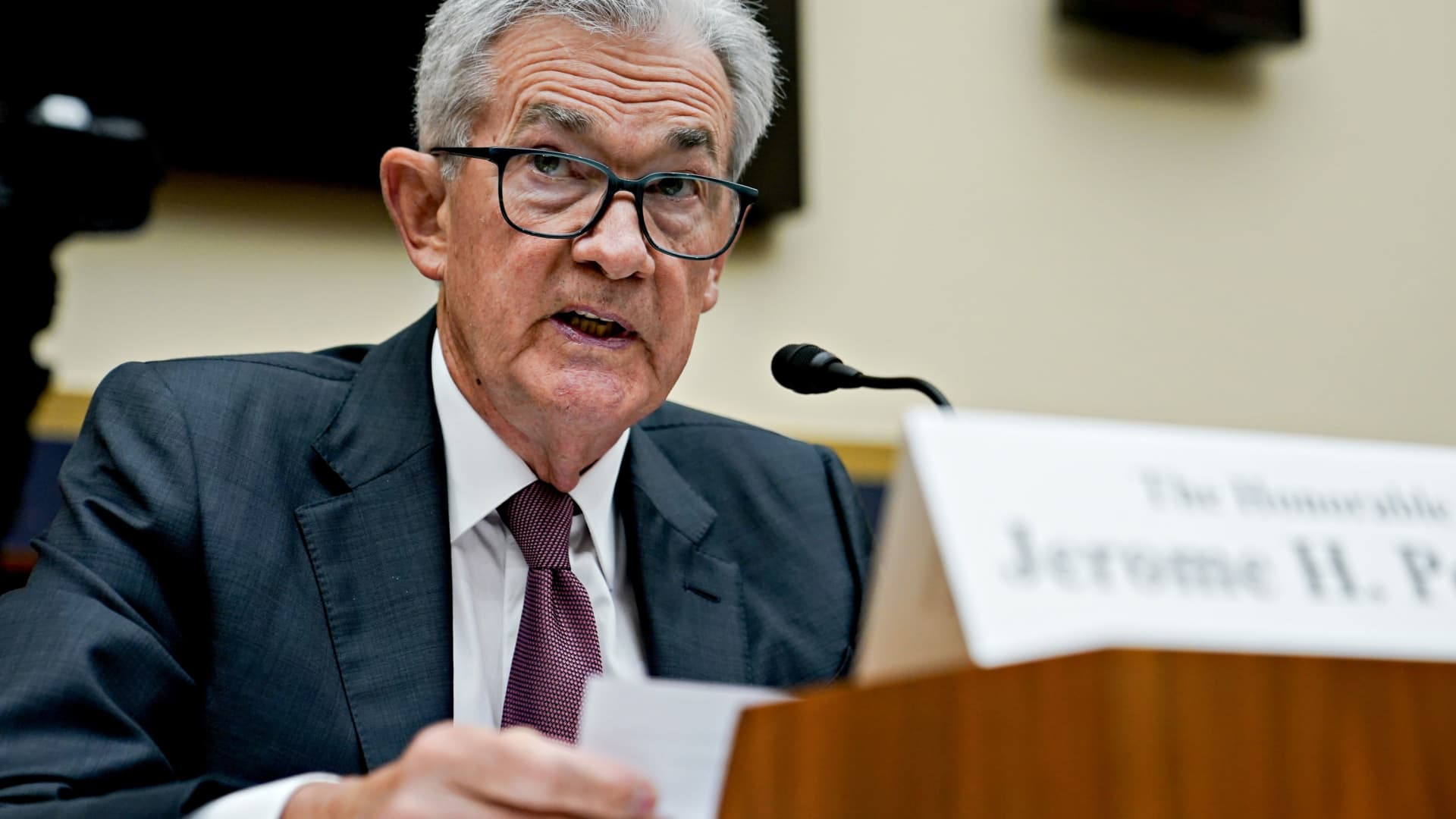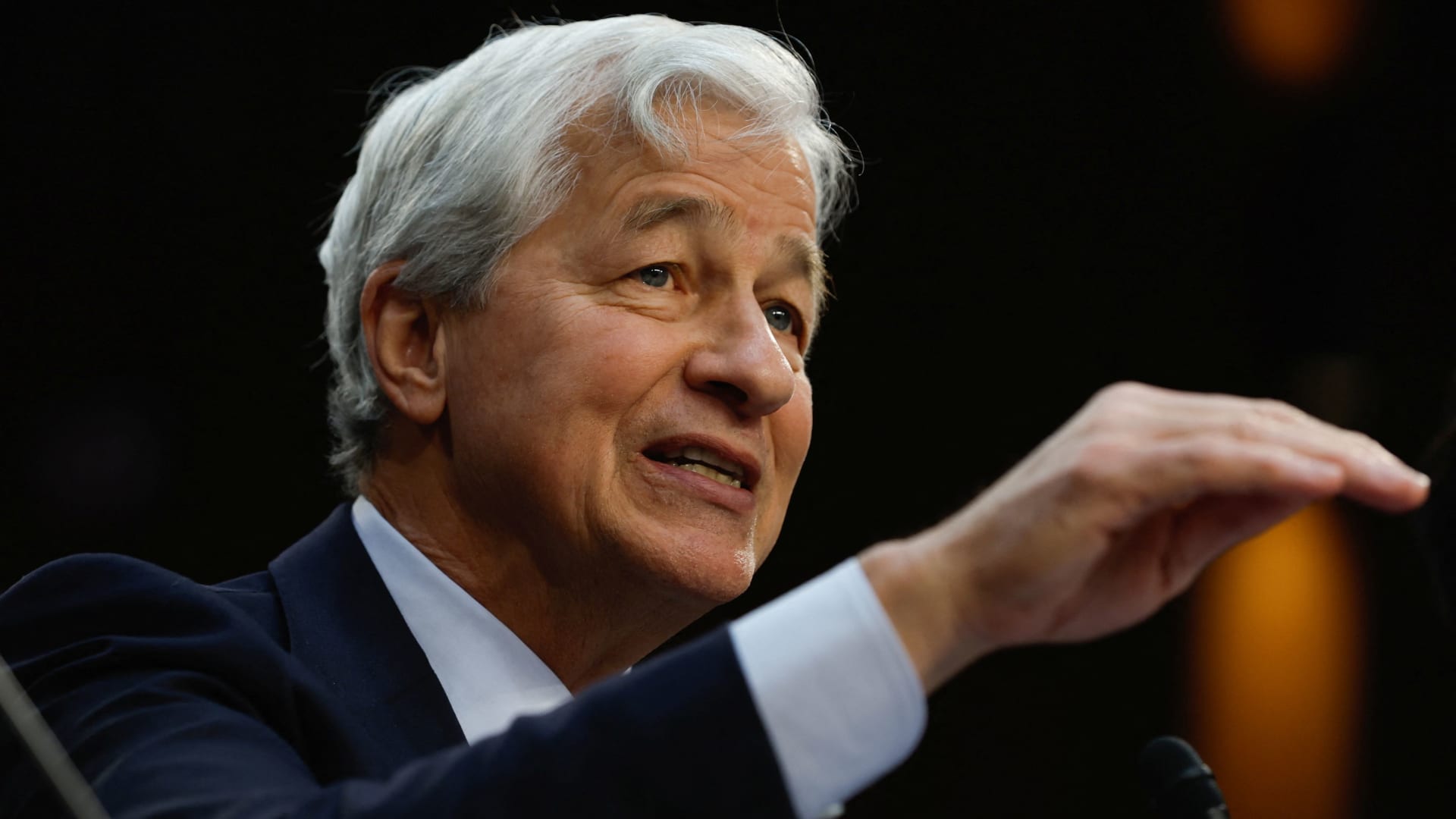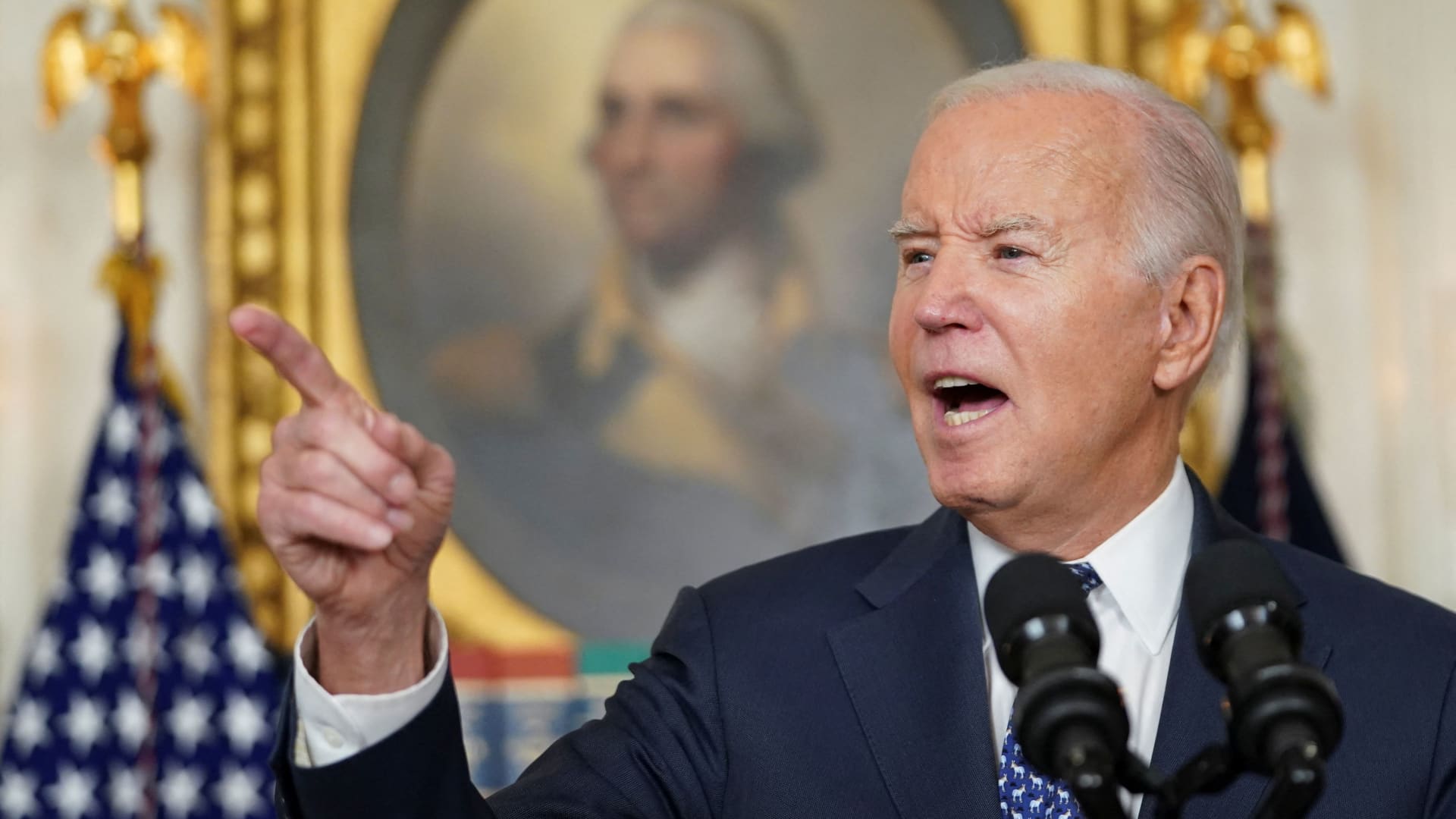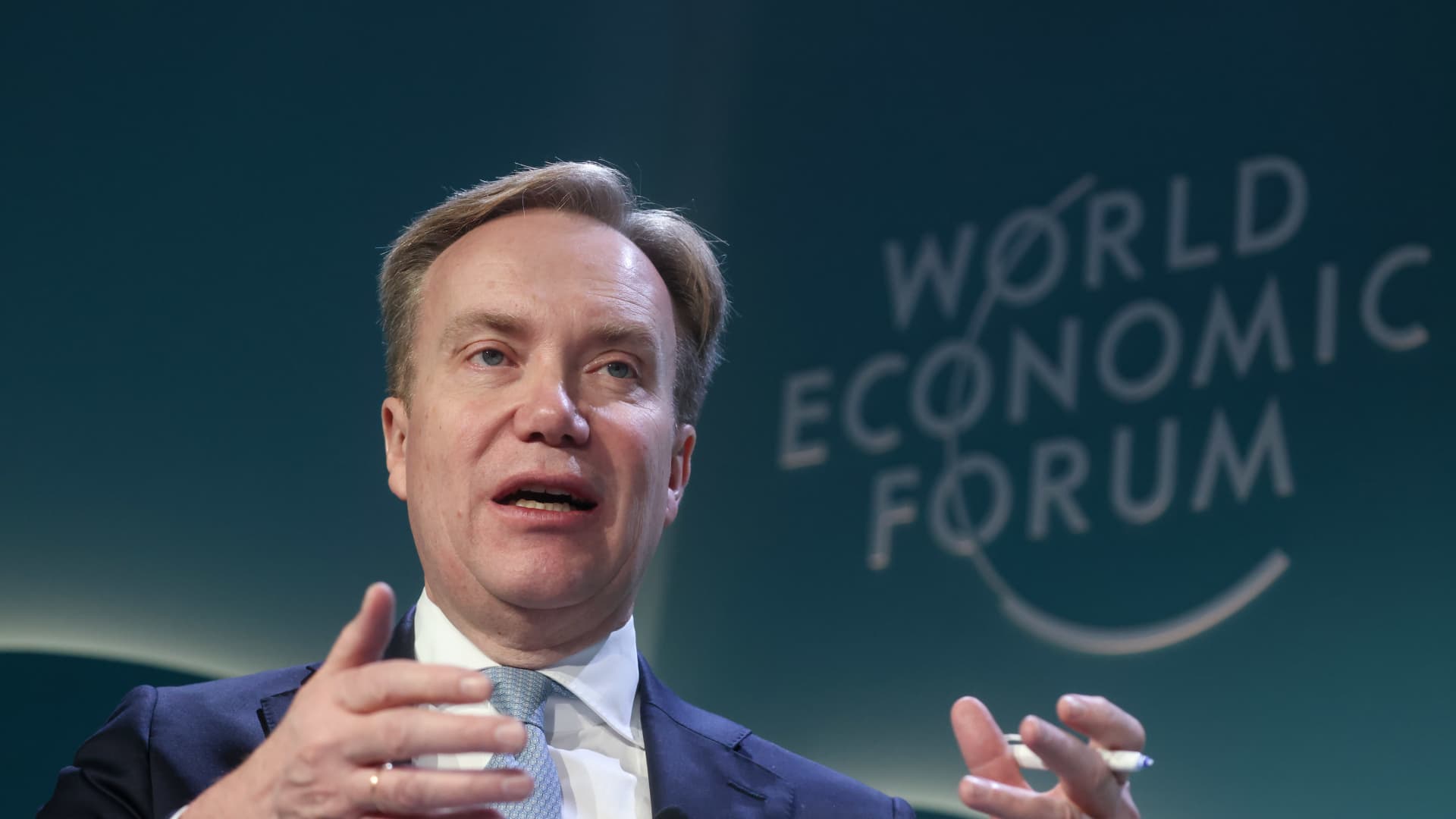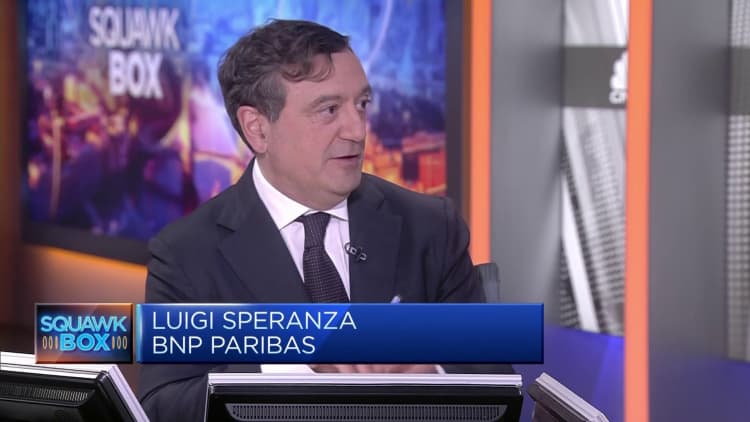Federal Reserve Chairman Jerome Powell during a House Financial Services Committee hearing on June 21, 2023 in Washington, DC
Nathan Howard | Bloomberg | Getty Images
Federal Reserve Chairman Jerome Powell is traveling to the Capitol on Wednesday. Markets are eager to gain more clarity on how the central bank plans to proceed with monetary policy this year.
Recent months have seen a changing dynamic between financial markets and the Fed regarding the pace and timing of expected rate cuts this year. Markets had to change their collective view from a highly accommodative central bank to a more cautious and deliberate stance.
With his congressionally mandated testimony set to take place in the House on Wednesday and the Senate on Thursday, Powell will be tasked with providing a sharper perspective – and not sending jittery Wall Street into a frenzy.
“The question for the market now is to gather information about when the Fed will start cutting rates and how many,” said Quincy Krosby, chief global strategist at LPL Financial. “He won’t necessarily answer that. But if there is any change, any nuance, then that is what the market wants to see.”
Central to how the Fed will act from now on is its view of inflation and how Powell expresses it. In recent weeks, he and others expressed satisfaction with price developments but also expressed concern that risks still lurk and said it was too early to ease monetary policy.
Markets currently expect the Fed to begin cutting rates in June and enact a total of four quarter-percentage point cuts this year, according to futures market prices measured by CME Group. Policymakers announced three cuts in December and largely refrained from providing a timeline.
Mixed signals complicate the message
On the inflation issue, the data had largely cooperated.
Inflation readings in the second half of 2023 showed a clear trend towards the Fed’s 2% target. However, January brought a shock and showed that consumer prices, particularly accommodation costs, remained stubbornly higher, posing a threat to the trend.
Powell will need to carefully summarize recent trends as he addresses the House Financial Services Committee on Wednesday and the Senate Banking Committee the day after.
“The message is not necessarily ‘mission accomplished’ but rather ‘we have made great progress and expect rate cuts to be imminent,'” said Joseph LaVorgna, chief economist at SMBC Nikko Securities. “I think that’s the central message.”
Powell’s testimony to Congress comes at a delicate time for markets: After breaking through historic highs, there has been a sell-off in the major stock averages this week amid lingering concerns about the future direction of interest rates and a sudden uncertain outlook for some of the major ones Tech names that have driven the course are keeping prices higher.
Both conditions are worrisome for policymakers. Sharp jumps in risk asset prices could be due to loose financial conditions that could lead the Fed to stick to its monetary policy, while a less certain environment could raise fears that interest rates could stay too high for too long.
Powell “cannot deviate from the data-dependent approach at all, but we really want to cut rates,” wrote Steven Ricchiuto, chief U.S. economist at Mizuho Securities. “Sharp fluctuations in financial conditions can easily run counter to the committee’s objective: maintaining tight labor market conditions while keeping inflation expectations and long-term interest rates at fixed levels,” he said, referring to the Federal Reserve’s policy-setting Federal Open Market Committee.
Political concerns
There are other dynamics Powell faces, too. Several economists, including LaVorgna, expect working conditions to worsen despite the seemingly high unemployment rate of 3.7%. Additionally, a stunning recent rise in cryptocurrency prices suggests uncommitted risk-taking, which could indicate there is too much liquidity floating around in the system.
In fact, Atlanta Fed President Raphael Bostic published an essay on Monday expressing concern about possible “pent-up exuberance” that could be released after rate cuts begin.
“We don’t believe monetary policy itself is accommodative, but the Fed and Powell still need to be concerned about this given these remaining ‘residues’ of speculation,” Macquarie strategists said in a note to clients on Tuesday. “The point is that little speculative frenzy coming out of nowhere should make it even harder for the Fed to sound dovish at this point.”
Finally, there are political considerations.
In addition to the usual pressures that come with presidential election years, there have been calls on the Hill for Powell and his cohorts to begin cutting interest rates. Sen. Elizabeth Warren, D-Mass., who was not a fan of Powell from the start, called in January for the Fed to start cutting interest rates, saying higher rates would be particularly painful for lower-income households.
They will have a chance to clarify the issue on Thursday, as Warren is a member of the Senate Banking Panel.
Powell needs to “make an argument for why the Fed needs to address interest rates in anticipation of inflation likely not being where it is right now,” LaVorgna said. “You’ll be damned if you do, damned if you don’t. So I think you need a very solid framework.”
Don’t miss these stories from CNBC PRO:
Source link
2024-03-05 21:39:22
www.cnbc.com

